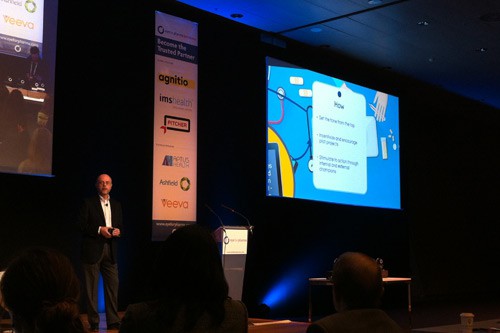
The pharmaceutical industry needs to work harder to show the value it brings to society by improving people’s health, according to senior industry leaders.
Speaking at the Eyeforpharma conference in Barcelona this morning Almirall’s CEO Eduardo Sanchiz said: “Let’s recognise and be proud that few other industries provide the value to society that we do … let’s be proud of what we do.”
He said he was “extremely infuriated” not to get the right level of recognition in society, despite patients telling him how his company has changed their lives.
He added: “We have to be able to articulate much better the value that we provide to society – we are much more part of the solution than part of the problem for increasing healthcare costs. If we fail to do that then either there is something wrong with the value that we claim we want to articulate, or we are not articulating it properly.
“Price is an important element for the research that we perform, so society needs to understand that.”
So far it remains a challenge, with a recent survey of patient groups marking the industry down on pricing after a year in which the issue was consistently in the headlines.
Just 15% of the patient groups polled by PatientView said pharma did well on ‘fair pricing policies’ and approaching half (45%) rated it ‘poor’ in this area, with hepatitis, HIV and rare disease treatment policies coming in for most criticism.
Sanchiz told Eyeforpharma: “We need to strike a much better balance in managing organisations in a way that is financially sustainable in the long-term and what that return is going to bring to society and specific patients.”
Incentivising innovation
Also speaking at the event in Barcelona was Janssen’s company group chairman Jane Griffiths who noted that there has to be profit element to the pharma business model if companies are to continue to produce innovative new medicines.
“We owe it future generations to improve the healthcare of society in the same way that previous generations improved it for us.
“Our industry probably has contributed to 50% of the increased life expectancy since the early 1900s. Thirty five years of increased life expectancy and we, as an industry, have probably contributed to at least 50% of that.”
Looking to more recent measures and Griffiths pointed to the 1.75 years’ increase in average life expectancy between 2000 and 2010 – “probably 75% of that has been driven by our research and development and focus on patients”.
“We have to be proud of what we do and understand how the ‘circle of money’ drives this,” she told the conference audience, adding that her entire organisation was tasked with being able to communicate the company’s commercial model – “this incentive for innovation needs to continue … [and] it starts with us understanding what the business model is”.
Lilly’s president for Europe and Canada Andrew Hotchkiss added: “We do have a business model that can be complicated to explain.
“Ten years ago I remember sitting in front of stakeholders, and the criticism we got was the industry was producing ‘me-toos’ and ‘where’s the real innovation’. Ten years later and we’re facing this explosion of new innovation and we get criticised for the cost – it’s always a difficult challenge, but a lot of it is a communications challenge.
“We’ve got to stay true to what we’re about, which is bringing medicines [to market] for high unmet medical need.”




